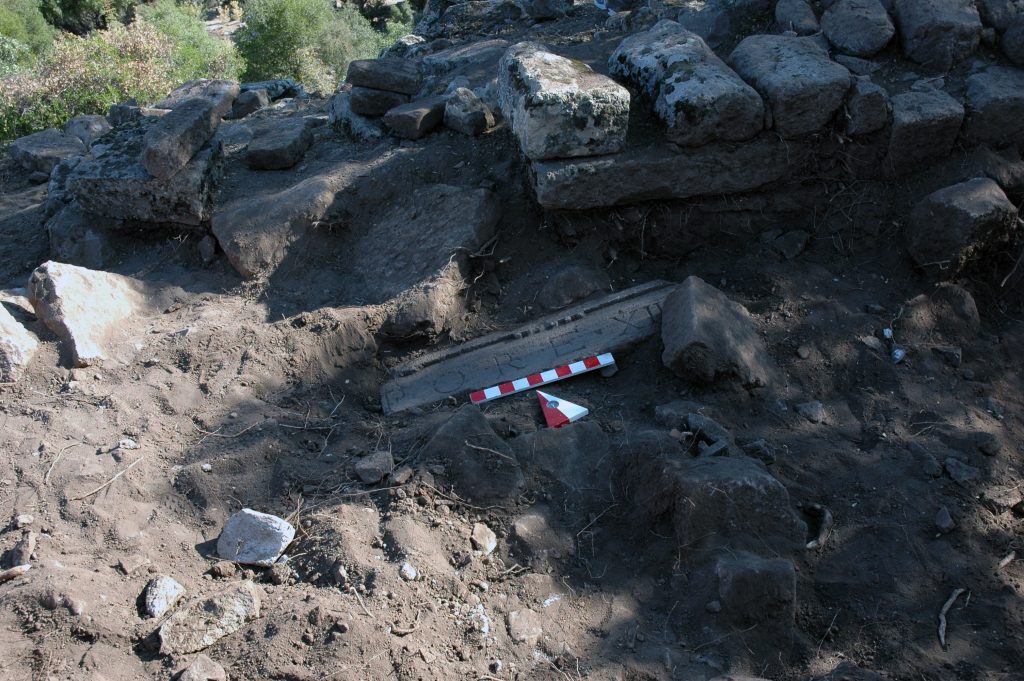
One of the Aigai’s necropolises is located on the northeastern slopes of the hill where the ancient city is. One of the roads that run through the necropolis reaches to the city wall. There are two gates on the northern and The earliest tombs are contemporary with the foundation of the city and dated to the end of the 8th century BCE. The necropolis area grew in parallel with the growth of the city in the Hellenistic Period. Intersection at the Northeastern Necropolis The Buildings in Aigai 76 northwestern city wall. Northernmost of the two gates, Gate of Demirkapı, is a smaller, rural city gate. It is understood that a larger stone paved road passes from in front of the Bouleuterion and goes directly to the Upper Agora and has been used since the Archaic Period. For this reason, this street from the city gate is called Gate of Agora Street.

The excavation in front of the Gate of Agora Street was carried out in 2006. The only gate that visitors have entered the city was Gate of Demirkapı until 2006. This newly excavated gate was named as Gate of Agora Street. Parts of an inscription from the reign of Emperor Tiberius related to the reconstruction activities in the city after the earthquake in 17 CE were found during the excavation of the debris of the gate.

Because of the inscription, which will be discussed in more detail later, the door was also called “Tiberius Gate”. The gate has been referred to as “New Gate” or “Tiberius Gate” in early publications until now, but will be referred as Gate of Agora Street from now on. During the excavation, a section foreseen as the doorway which is deeper than the city wall and stone elements that may be members of the gate architecture were detected on the surface. An important inscription on a part of the architrave block in Doric order was found during the studies in this area. ..]PORE XII[.. was written on the block.
Above this inscription, on a second architrave piece ..]VRBIV[.. is being read. The inscription in question is a template and indicates the cities that were renovated with the help of Emperor Tiberius after the earthquake occurred in the northern It is understood that a larger stone paved road passes from in front of the Bouleuterion and goes directly to the Upper Agora and has been used since the Archaic Period. Aigai 77 Aegean in 17 CE. This renovation phase is dated to 34-35 CE.
